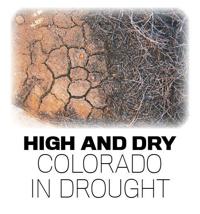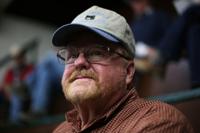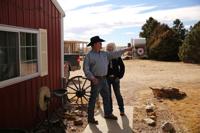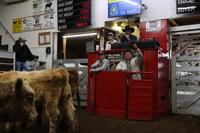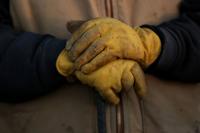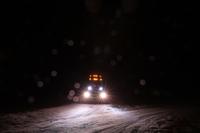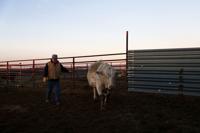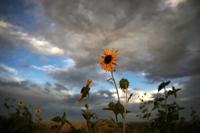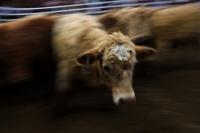High and Dry: Colorado in Drought — 5th generation El Paso County rancher hit with disaster
In the second part of our series, we follow the trials of a 5th generation cattle rancher in El Paso County facing down a near impossible plight in 2020 due to drought. (Video by Skyler Ballard) Check back Friday, March 5, 2021 for part three of our drought series.
{
“@context”: “https://schema.org”,
“@type”: “VideoObject”,
“name”: “HIGH AND DRY | Colorado in Drought: Part 2, The Present”,
“description”: “In the second part of our series, we follow the trials of a 5th generation cattle rancher in El Paso County facing down a near impossible plight in 2020 due to drought. (Video by Skyler Ballard) Check back Friday, March 5, 2021 for part three of our drought series.”,
“thumbnailUrl”: “https://bloximages.newyork1.vip.townnews.com/denvergazette.com/content/tncms/assets/v3/editorial/a/06/a068365a-845c-5581-837d-48b8f213d612/603f3c194b7bb.image.jpg?resize=1396%2C785”,
“uploadDate”: “2021-03-02T23:32:00-07:00”,
“contentUrl”: “https://cdn.field59.com/GAZETTE/f734800c62450e79002ab036fae2a36b0155116d_fl9-360p.mp4”
}
Gary Paul steps out of the truck along the edge of the county road, his cowboy boots turning slowly in the damp sand as he stretches his back.
His heels dig in, just a half inch or so, and uncover a fresh layer of Earth.
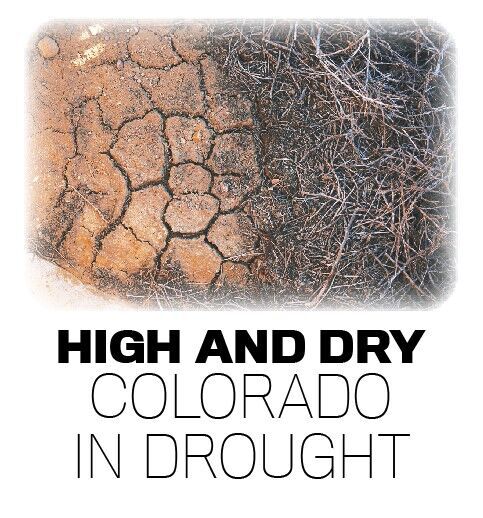

Small pools of water cling to the road as the last raindrops dance in the evening sun. Sunflowers weave back and forth in the cool breeze.
“Watch out for rattlesnakes,” Paul says as he takes in the view of a large thunderstorm to the east.
The golden fields in front of him join the distant storm in a perfectly flat line, abruptly shifting into a steel gray curtain where the rain meets the horizon.
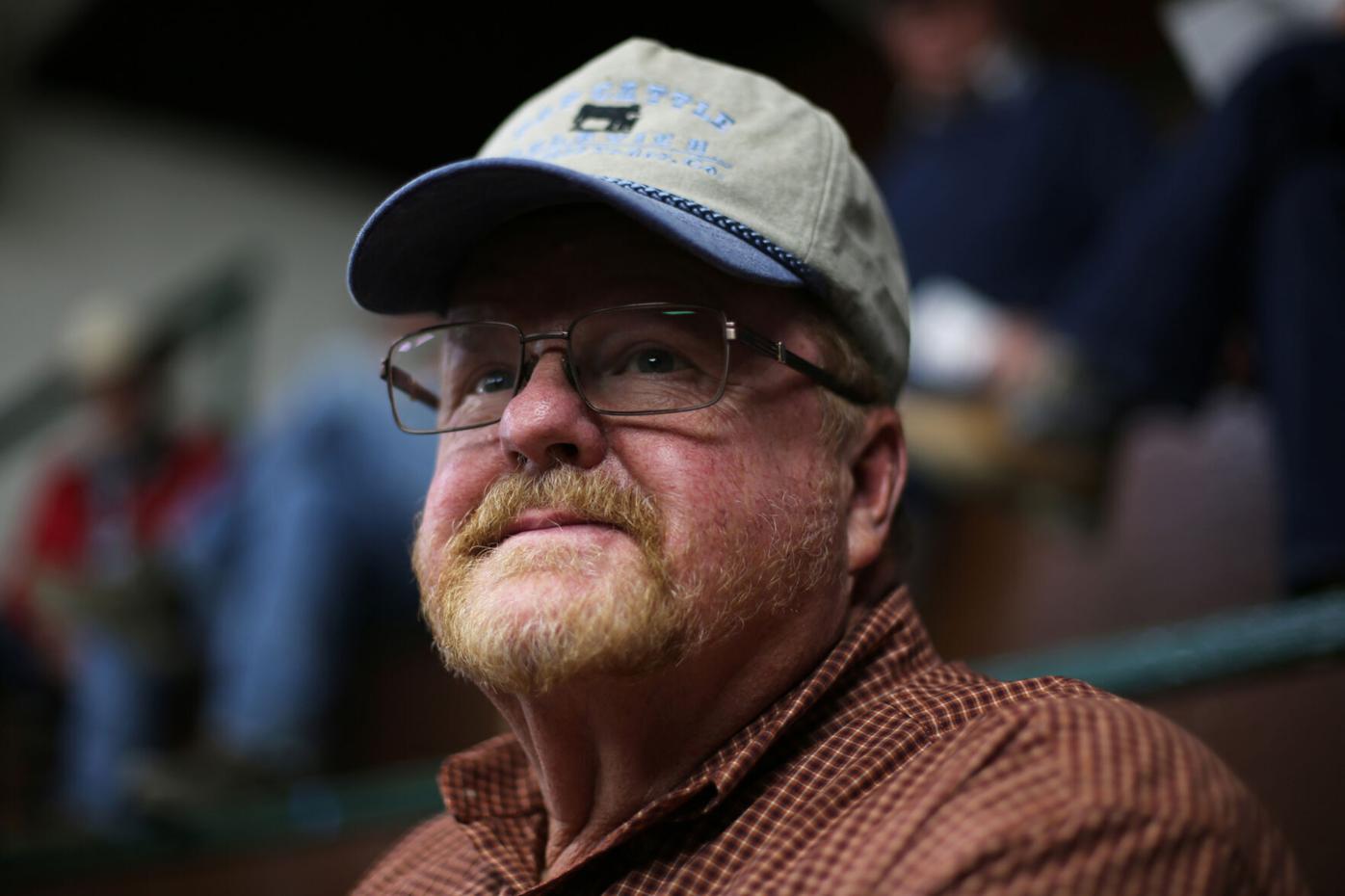
Gary Paul watches his calves enter the sale ring during a livestock auction at the La Junta Livestock Commission sale barn in early February 2021. Paul's calves and bulls were among the highest selling that day. (Forrest Czarnecki/The Gazette)
Forrest Czarnecki

Gary Paul watches his calves enter the sale ring during a livestock auction at the La Junta Livestock Commission sale barn in early February 2021. Paul’s calves and bulls were among the highest selling that day. (Forrest Czarnecki/The Gazette)
It’s the end of July, and the late-season rain is a welcome sight for Gary Paul. As a fifth generation cattle rancher in Yoder in eastern El Paso County, he’s one to greet the moisture with open arms.
But the surprise storm can only provide so much hope for Paul. This year, what little rain has come to the area has been spotty at best.
Paul’s ranch is tucked among the rolling hills and windrows east of Colorado Springs, in a place most people might describe as the middle of nowhere.
Out here they measure rain in tenths of inches during a good year.
Right now, Paul keeps track by the hundredth.
• • •
During 2020 Colorado was hit by one of the worst droughts in recent memory, with little sign of relief in the forecasts for spring, 2021.
A lackluster spring absent heavy snowfall in 2020 set the stage for one of the driest years on record. Colorado’s precipitation was nearly six inches below average throughout the entire year, according to the Colorado Climate Center, which has been tracking weather and climate data across the state since the 1890s.
From August 2020 through February 2021 every Colorado county experienced some level of drought, as recorded and classified by the United States Drought Monitor.
During the summer of 2020, the dry spell was so dire the state activated its emergency drought plan for only the second time. Part of the plan called on agricultural producers and the agencies supporting them to coordinate response efforts amongst themselves.
Ranchers like Gary Paul are among those hardest hit.
As a dryland rancher, Paul has no irrigation and relies on his pastures to be watered by rain storms and snowfall — God’s irrigation, as he puts it.
Paul’s farmhouse sits atop a gentle knoll south of a small town named after an 1800s-era post office, guarded by rows of ponderosa pines planted nearly 40 years ago. He runs about 165 cattle, a much smaller operation than at the peak of his ranching days.
In better years he could look out over his pastures and see cattle grazing under blue skies with rolling hills of green grass, a Western scene fit for a postcard. For the past 18 months, his pastures have been dry, dusty and brown.
El Paso County is a bright crimson color on the website for the U.S. Drought Monitor, D3 — Extreme Drought.
The impacts of this classification are seemingly apocalyptic: Irrigated landscapes start to die, fire danger dramatically increases and water restrictions start to be implemented.
For people who live and die by the rain, like Gary Paul, this is disaster.
• • •
A small string of cattle shuffles through the dust behind Paul’s beat-up green Dodge truck as it rumbles toward the middle of a pasture near his home.
With the push of a button, another 1,000 pound round hay bale is dropped in the desolate field. There’s more bare soil and cacti in the pasture than grass.

Gary Paul takes a bale of hay from the top of a pile while feeding his cattle on his ranch in early February 2021. Paul has been feeding hay for months, and there is no end in sight, at least not until the rain comes and the growing season arrives. (Forrest Czarnecki/The Gazette)
Forrest Czarnecki

Gary Paul takes a bale of hay from the top of a pile while feeding his cattle on his ranch in early February 2021. Paul has been feeding hay for months, and there is no end in sight, at least not until the rain comes and the growing season arrives. (Forrest Czarnecki/The Gazette)
Paul removes the twine bale wrap, climbs back into his truck and drives off as the cattle converge on the hay.
The sinking sun paints the sky a golden-white and signals for the day to close, but there’s still more work to do. Another 1,000 lbs. of hay to feed. Another several hundred dollars worth of income being gobbled up by 43 cows and calves in another arid pasture.
It’s the middle of September, and he has already been feeding round bales for months on end. To be exact, Paul has been feeding hay since before Christmas Day of 2019.
In a near-normal year, feeding hay shouldn’t start until later in the fall or winter, once pastures are all eaten up for the season and the cattle are put into pens on the ranch before being sold at market. But with the drought, almost nothing on the ranch is normal.
“It’s a struggle, a huge struggle,” Paul says.
As a rancher with no hired hands, Paul occasionally gets help from his long-time girlfriend, Cassie Sharon.

Gary Paul jokes around with his longtime girlfriend Cassie Sharon outside of his ranch home during a recent visit from Sharon in February 2021. Sharon and Paul have been friends and partners for several years now, but after a traumatic year of dealing with the stress and struggle of the drought and unfair treatment from Paul, Sharon decided to take a step back from the relationship before making amends with Paul in early 2021. (Forrest Czarnecki/The Gazette)
Forrest Czarnecki

Gary Paul jokes around with his longtime girlfriend Cassie Sharon outside of his ranch home during a recent visit from Sharon in February 2021. Sharon and Paul have been friends and partners for several years now, but after a traumatic year of dealing with the stress and struggle of the drought and unfair treatment from Paul, Sharon decided to take a step back from the relationship before making amends with Paul in early 2021. (Forrest Czarnecki/The Gazette)
Sharon, who lives near Falcon but grew up in Pueblo County, thought she had seen drought before. This year she acquired a new definition of “dry.”
“It was like a desert,” she says, recounting the first time she fed cattle in the pastures during the late summer, “It was a real reality check.”
• • •
In March of 2020, the U. S. Department of Agriculture designated 21 counties in Colorado as “primary natural disaster areas” because of the ongoing drought. This designation allowed agricultural producers in those 21 counties to apply for Farm Service Agency emergency loans, helping take the edge off their economic losses.
El Paso County was not among those included in this designation.
Farmers, ranchers and other agricultural producers in 14 additional counties, some of which border El Paso County, were also encouraged to apply for emergency loans, extending the offer of relief to 35 of the state’s 64 counties.
According to the National Agricultural Statistics Service, part of the USDA, most major crops harvested during 2020 in the state saw significant losses compared to the previous year’s yield. For cattle ranchers across the state, the numbers looked similar. In a report published by the agency, the number of beef cows on Jan. 1, 2021, was down 112,000 head, about one-sixth of the state’s total number of cattle, from the prior year.
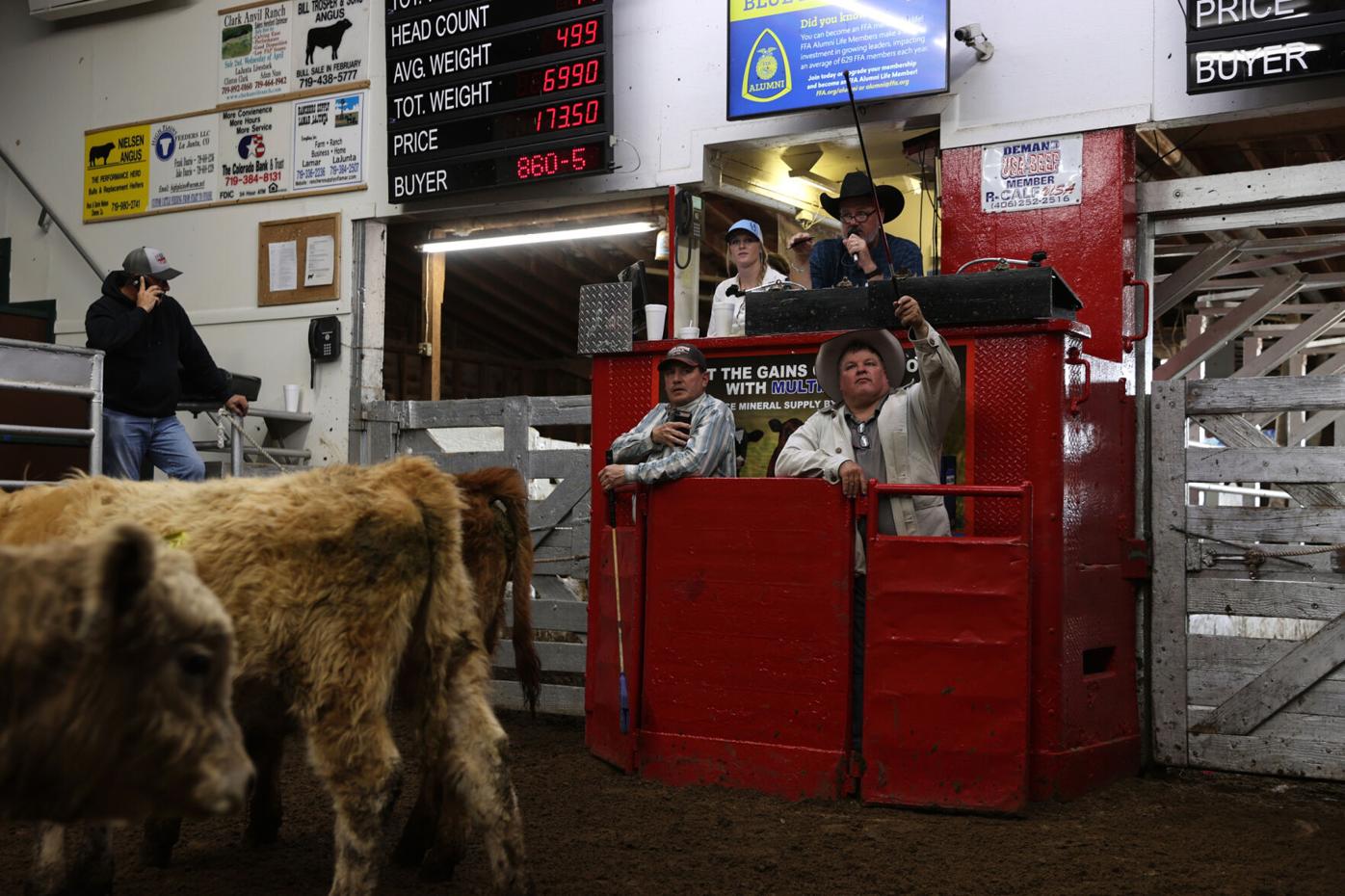
Jace Honey, in black cowboy hat atop the podium, calls out bids on Gary Paul's calves during an auction at the La Junta Livestock Commission sale barn in early February 2021. Paul began his cattleman career in this sale barn six decades ago, selling his first calf, Arnie, who was an orphan that Paul bottle fed and raised himself. Arnie was sold in this same sale ring. (Forrest Czarnecki/The Gazette)
Forrest Czarnecki

Jace Honey, in black cowboy hat atop the podium, calls out bids on Gary Paul’s calves during an auction at the La Junta Livestock Commission sale barn in early February 2021. Paul began his cattleman career in this sale barn six decades ago, selling his first calf, Arnie, who was an orphan that Paul bottle fed and raised himself. Arnie was sold in this same sale ring. (Forrest Czarnecki/The Gazette)
“Drought may have had a hand here, with people liquidating or reducing their herds,” said Bill Meyer, the director for the the agency’s Mountain Regional Field Office, which publishes those statistical reports for much of the Rocky Mountain West.
“The whole Eastern Plains were just short of water,” Meyer added, which makes it tough for ranchers to hold onto their cattle and keep them fed during an extreme drought.
All of Colorado lacked water for much of 2020. Colorado briefly shook drought conditions in 2019, after some help from a very snowy spring, but it didn’t take long for hot and dry conditions to settle in again. By late April of 2020 the state was on track for widespread drought.
Since 2000, when the U.S. Drought Monitor first started reporting, Colorado has consistently been ranked among the states experiencing the worst drought conditions in the country. Now the entire state is classified as being in at least moderate drought, and rising on the scale of classification, 90% is in severe drought or worse, nearly 60% is in extreme drought, with just over 17% in exceptional drought — the worst category.
!function(){“use strict”;window.addEventListener(“message”,(function(a){if(void 0!==a.data[“datawrapper-height”])for(var e in a.data[“datawrapper-height”]){var t=document.getElementById(“datawrapper-chart-“+e)||document.querySelector(“iframe[src*='”+e+”‘]”);t&&(t.style.height=a.data[“datawrapper-height”][e]+”px”)}}))}();
Breaking the spell of drought in 2019 was just a stray blip on the radar, and the hot, dry conditions that brought drought to Colorado in 2020 are only going to increase in the future, according to experts.
• • •
A small tumbleweed cartwheels across the county road, skipping over the washboard. Low clouds, almost black in color as they fade from the sun, bear down on Truckton, a small collection of buildings and a single county road intersection just north of Paul’s front door.
Beyond the ponderosas that guard his driveway, the cold wind screams through the fence lines.
“Agriculture is such a gamble. I mean, it’s a way bigger gamble than Las Vegas,” the 66-year-old rancher says, sitting in a wood-backed chair in his living room.
Mementos of his family legacy fill the room. A saddle he bought for $27.50 when he turned 10. The footrest with his family’s brand carved into the leather top. Other heirlooms he hopes to pass on to Sydney, his only child.
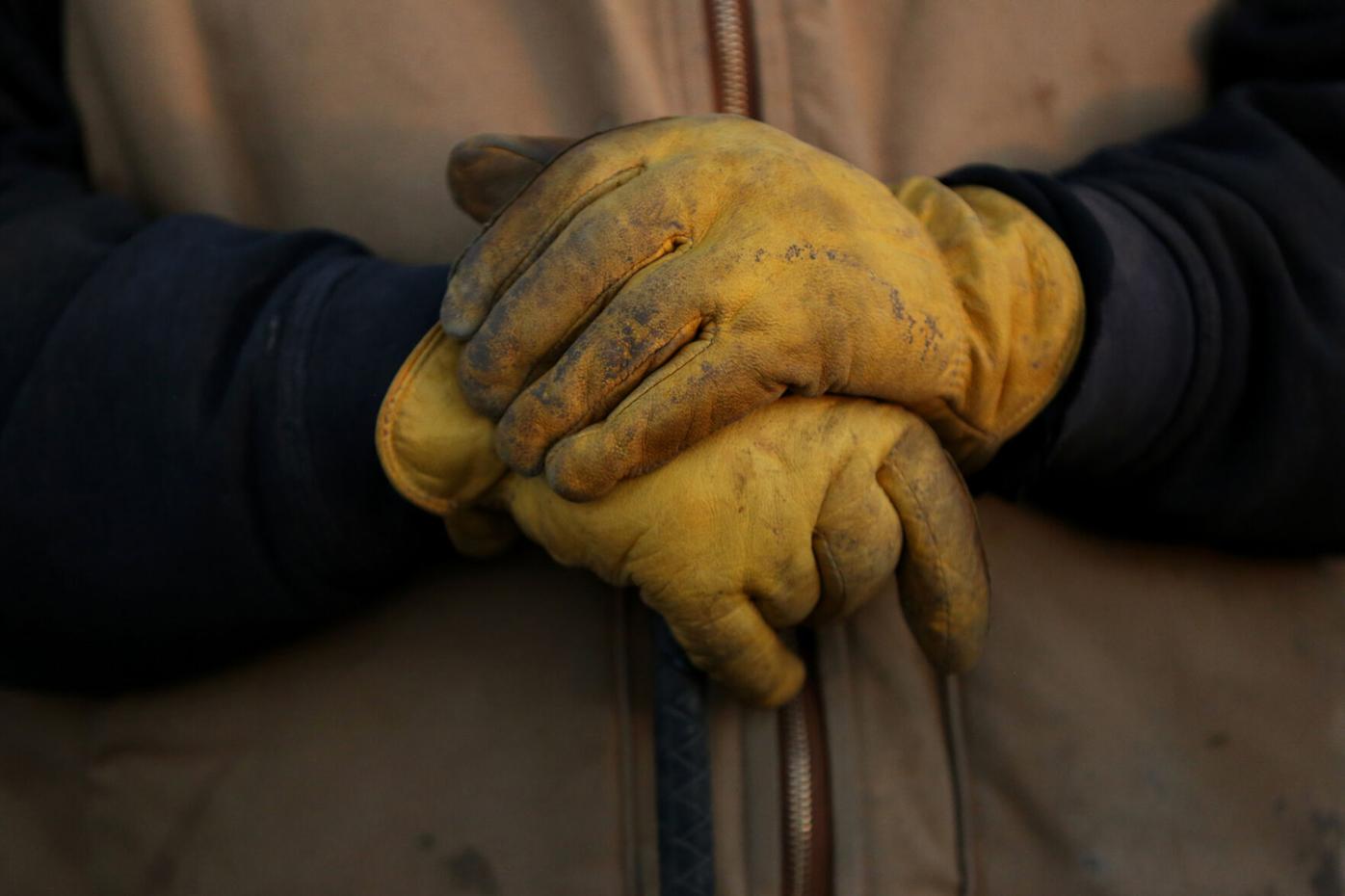
Gary Paul takes a quick break and rests his hands on a cattle sorting stick while moving a couple of his bulls into a stock trailer in February 2021. (Forrest Czarnecki/The Gazette)
Forrest Czarnecki

Gary Paul takes a quick break and rests his hands on a cattle sorting stick while moving a couple of his bulls into a stock trailer in February 2021. (Forrest Czarnecki/The Gazette)
This year, financial hardship and the emotional rollercoaster brought on by the drought has hit home for Paul. When faced with the prospect of what the dollars and cents will look like after a long year of bleeding money, he feels he only has one option.
“I have ignored that answer for lots of reasons,” he says, “Because if I really figured it up, I would start crying. And tomorrow I’d load everything up and sell (the cattle).”
As the last person in the Paul bloodline to run the ranch, the pressure he puts on himself to be considered a successful rancher by financial standards is always present.
With an agricultural family tree stretching back to the 1800s, the weight of five generations rests on Paul’s shoulders. His future is dependent upon something beyond his control — rain.
After months of praying for moisture and a growing mountain of stress, Paul’s attitude has taken a beating.
Even as a self-described overly stubborn rancher who is wed to agriculture, determined to make it no matter what, the cracks start to show.
“Sometimes it makes you feel like a failure,” Paul says.

Gary Paul's semitrailer idles down outside of his ranch house near Yoder after returning from a hay trip to Kansas in December 2020. The hay trips that Paul makes are a way for him to turn over a few bucks, but the profits don't last long, as the average trip is 600 miles and his expenses are often close to what he charges neighbors for his delivery services. (Forrest Czarnecki/The Gazette)
Forrest Czarnecki

Gary Paul’s semitrailer idles down outside of his ranch house near Yoder after returning from a hay trip to Kansas in December 2020. The hay trips that Paul makes are a way for him to turn over a few bucks, but the profits don’t last long, as the average trip is 600 miles and his expenses are often close to what he charges neighbors for his delivery services. (Forrest Czarnecki/The Gazette)
His eyes well up, and his voice cracks. A couple of tears slip from the corners of his eyes. A long pause follows.
“Everybody before me made it, and they were somewhat successful with it. And I feel like I have been too, but it gets to this point, you feel like a failure.”
Another pause. Paul catches a shaky breath.
“And yet, you realize you’re not. You’re doing everything you can.”
So far, he has kept on top of his finances and hasn’t had a run in with the bank or missed any payments, but the stress, the uncertainty, can be crushing.
“How many minutes are in a day? And there’s not many minutes in a day I don’t think about that. Or at night. I don’t sleep much at night.”
• • •
Hauling hay for himself and bringing back loads for his neighbors has been a way for Paul to turn over a few bucks. He’s been making multiple trips per week for several months now, offering up a service to neighbors who can’t haul large quantities of hay themselves.
“I don’t charge them as much as most truckers would charge,” Paul says, “I’m still not making very much money, but I make a little bit of money.”
The hay trips aren’t exactly down the road, either — 600 miles round trip is an average run, taking Paul to western Kansas and back.
But his profits evaporate just as quickly as they trickle in. In the past 12 months, Paul estimates he has spent well over $100,000 on hay, and he knows he won’t recover much of that money.
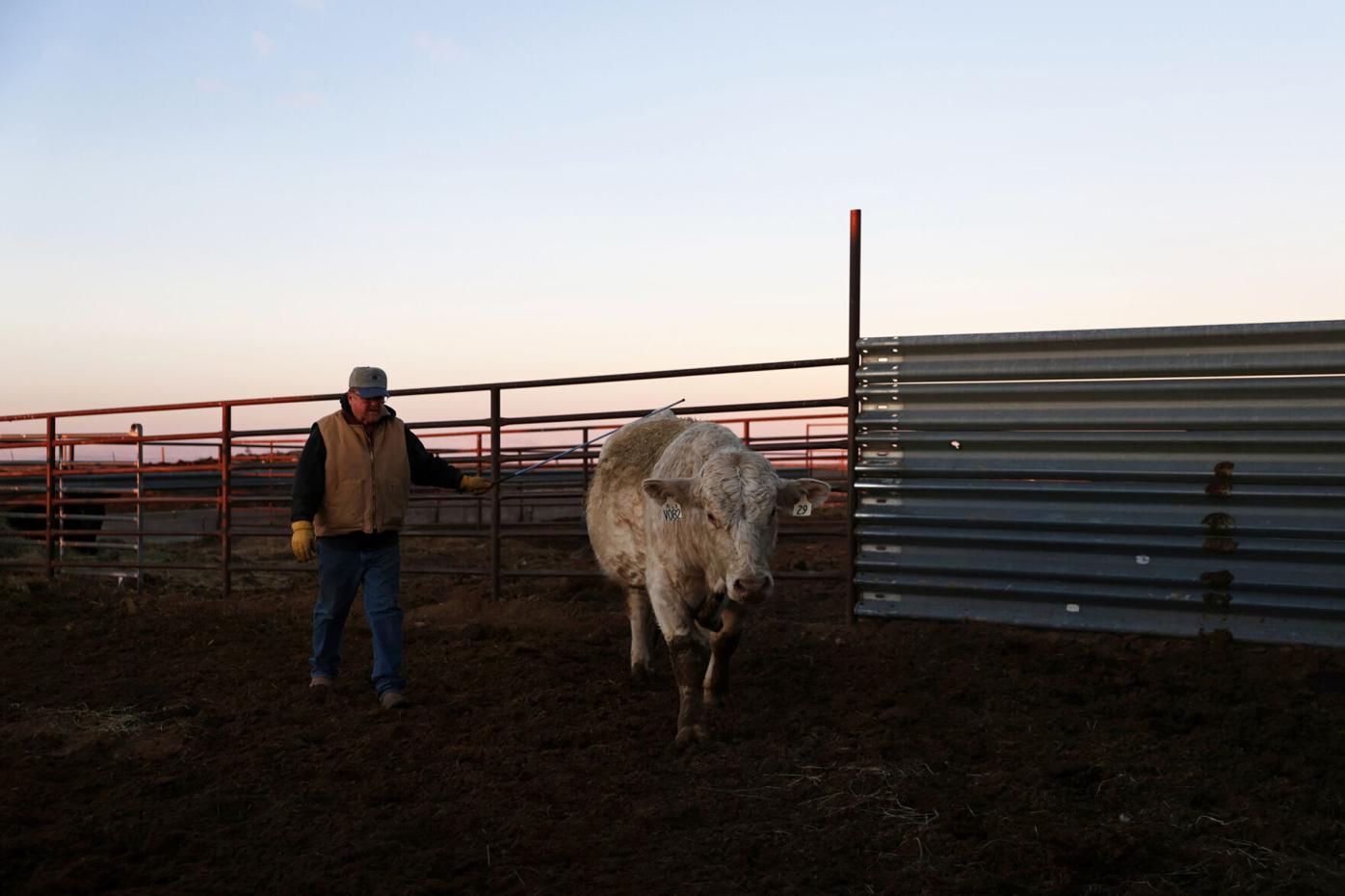
Gary Paul moves a bull out of a pen before taking it to a livestock auction in La Junta in February 2021. Because of the drought Paul has sold off much of his herd in the last 14 months, decreasing his numbers from around 165 to just over 50 cattle in that time period. (Forrest Czarnecki/The Gazette)
Forrest Czarnecki

Gary Paul moves a bull out of a pen before taking it to a livestock auction in La Junta in February 2021. Because of the drought Paul has sold off much of his herd in the last 14 months, decreasing his numbers from around 165 to just over 50 cattle in that time period. (Forrest Czarnecki/The Gazette)
The hay is necessitated by mostly barren-pastures, some of which he leases. That’s another drain on his finances.
“It’s kind of like you going down to the 7/11 store, and you pull up out front, and you go in and prepay for gas, $40. And then you go out to the pump and you don’t get any gas,” he says, of leasing pastures that have dried up.
Hot, dry conditions throughout the summer sucked up a lot of the most valuable water resources for dryland ranchers, topsoil moisture and subsurface moisture, both of which are key to grass growth and healthy pastures.
“The whole year (of 2020), you’ll see that the soil moisture supplies were terrible compared to even a year ago,” said Bill Meyer, the director of the Agriculture Statistic office. “Our pasture and range feed condition was always rated way below last year (2019) and the five year average of it.”
• • •
Last September the National Oceanic and Atmospheric Administration published a long-term weather forecast outlining a La Niña cycle, with a drier and warmer 2021 for the southern half of the state.
Throughout the fall and into the winter, those predictions seemed to be holding. By early February, six of the eight measurement zones in the state had snowpack averages in the 70 or 80 percent range, with the Upper Rio Grande the only area above 100 percent at 104.
Hot and dry conditions are expected to last for much of the year again, according to a report released by the Colorado Agricultural Impact Task Force, which analyzes the impacts of drought on the state.
“What drought does is sort of drop a bomb, in some ways, that just has ripple effects through space and time on ag business,” said Kate Greenberg, Colorado’s agriculture commissioner. “So much of the impact of drought is not restricted to the drought year itself. If you think about 2018 and (the) 2020 drought year, a lot of producers were still recovering from the 2018 drought.”
In a dismal picture for Colorado’s agricultural economy, a $47 billion industry, periods of low moisture and hot summers are likely to only intensify over the next several decades.
Since the start of the 21st century, Colorado has seen a definitive warming trend, hotter temperatures and drier summers tied to climate change.
“Most of our warmest years on record in Colorado have come since 2000. And that trend is very robust,” said Russ Schumacher, the state’s climatologist.
August of 2020 was the hottest on record, according to the Colorado Climate Center. Drought cycles aren’t new to Colorado, but a hotter and drier future will present monumental challenges to agriculture.
The task force report, which was targeted toward informing the state legislature, outlines the consequences of what extreme drought might do to Colorado’s future economy, including hundreds of millions of dollars in losses for crop failures, insurance payouts and other costs absorbed by agricultural producers.
Dawn Thilmany, a professor of agricultural and resource economics at Colorado State University, is part of an extension and outreach program that informs ag producers about drought-related changes in the state, and about resources to cope.
She has seen a change in attitudes among farmers and ranchers as Colorado’s water resources continue to dry up.
“It used to be you’d go to those meetings and they’d just be mad, even though you were just telling them the reality of what was happening,” Thilmany said.
But in recent years, things have taken a different tone at extension meetings.
“I would say over the two decades I’ve been at meetings, there is (now) kind of a better understanding that, ‘OK, this is for real,’” Thilmany added.
Whatever changes may happen to agriculture in Colorado are still unknown, according to Thilmany. But there is one prediction that seems reliable.
The water that Colorado farmers and ranchers will have at their disposal is diminishing.
“The reality is, there’s going to be less,” Thilmany said.
• • •
Out near Paul’s ranch, water can be hard to come by both above and below ground.
In recent years, competition with development has plagued Paul’s own water table.
“My (first) well that I had here, it was like 290 feet deep, and it went dry,” Paul says.
Beyond his windows and to the north, small lights start to dot the horizon as the sun slips behind Pikes Peak. As darkness gathers, electric lights sparkle like glitter across the prairie.
Paul hasn’t had any surveyors or specialists out to officially diagnose the changing water table, but to him the changes in the landscape are all the evidence he needs.
“And the reason (my well) went dry, and I don’t blame them,” Paul says as he refers to the new 35-acre ranchettes popping up all around him, “But right up here, where these developments are, they’re drilling wells. And they’re going deeper. And so a lot of these old time wells are going dry.”
The growth on the east side of Colorado Springs has skyrocketed in recent years and even spilled out beyond the city limits into places like Ellicott and Yoder.
As the development follows Highway 94 east, so does a thirst for Colorado’s precious water resources.
“I’ve got a pasture up here that I used to … haul water up there sometimes,” Paul says and he motions out to the northwest of his property towards the city.
“And a lot of times I was hauling water at night. And from that tank, I remember I counted 11 yard lights. And then a couple of years later, I counted 100, and then about 160 yard lights,” Paul adds.
Paul no longer owns that pasture, it’s disappeared along with countless other pieces of ranchland near Colorado’s second-largest city.
“But right now, I bet from that same place, you could probably see 5,000 or 6,000 yard lights,” Paul says.
While underground water resources will not help Paul irrigate his pastures or produce a hay crop of his own, the water he gets from his well is his lifeblood, because it’s the only reliable water he has. He hopes he never loses it again.
After his first well went dry, the second one, which is his current water supply, took a lot more digging to bring to life.
“I had to go 622 feet to hit any water at all,” Paul says.
His story, though anecdotal, mirrors that of wells and aquifers across the West. Overuse, arguable mismanagement, and an increased population drawing on limited resources have led to a shortage of water.
“I’ve only been here 66 years, but I see a lot of wells that aren’t there anymore. I mean, the holes are there, but they’re dry,” Paul says.
• • •
The snow whips sideways as Paul’s truck rumbles through the night, daggers of white cutting in front of the headlights.
He’s loaded down with 29 bales of hay, which hang over his trailer bed and nearly block off both lanes of the county road.
It’s just past 10 p.m. and the snow is letting up as his tractor trailer makes a sweeping turn into the driveway, marking the end of a 15-hour hay journey to Kansas for the exhausted rancher.
But for Paul, that’s all in a day’s work as he tries to survive a drought that is extending deep into winter.
He leans back in the rolling desk chair where he often finds himself answering the landline phone or jotting down notes in a handmade leather accounting book, branded “P&P Cattle,” where he keeps track of ranch finances and other important scribbles.
His back hurts and his shoulders are tight.
Sitting in a truck all day and loading dozens of tons of hay onto a trailer is not exactly a comfortable outing. Decades of physical labor and a ranch accident that nearly killed him in the early 2000s have clearly taken a toll.
“I feel fine, but I’m tired,” Paul says. He’s leaning back with one leg propped up on the other, “I’m very tired.”
• • •
There has been a precipitous decline in the number of what are classified as small farms and ranches over the past several decades, according to the Census of Agriculture. That’s no secret. One major factor is the increasing average age of farmers and ranchers, along with the absence of a next-in-line son or daughter who is willing to take over the business.
Gary Paul fits into this last category.
“Out here, there’s very few people that stay here,” Paul says from his living room. In a small community like Yoder, it’s easy to notice when people move away and don’t come back.
Across the state, nearly 200 miles away from the old wagon wheel leaning against the door frame at Paul’s home, his daughter, Sydney, is pursuing her own career.
“They don’t want to farm and ranch because they’ve seen how hard it is,” Paul says, “Most of the younger generation says, ‘Why in the world would I do that? You know, I can make three cents an hour farming, and I can make $30 an hour going to town.’”
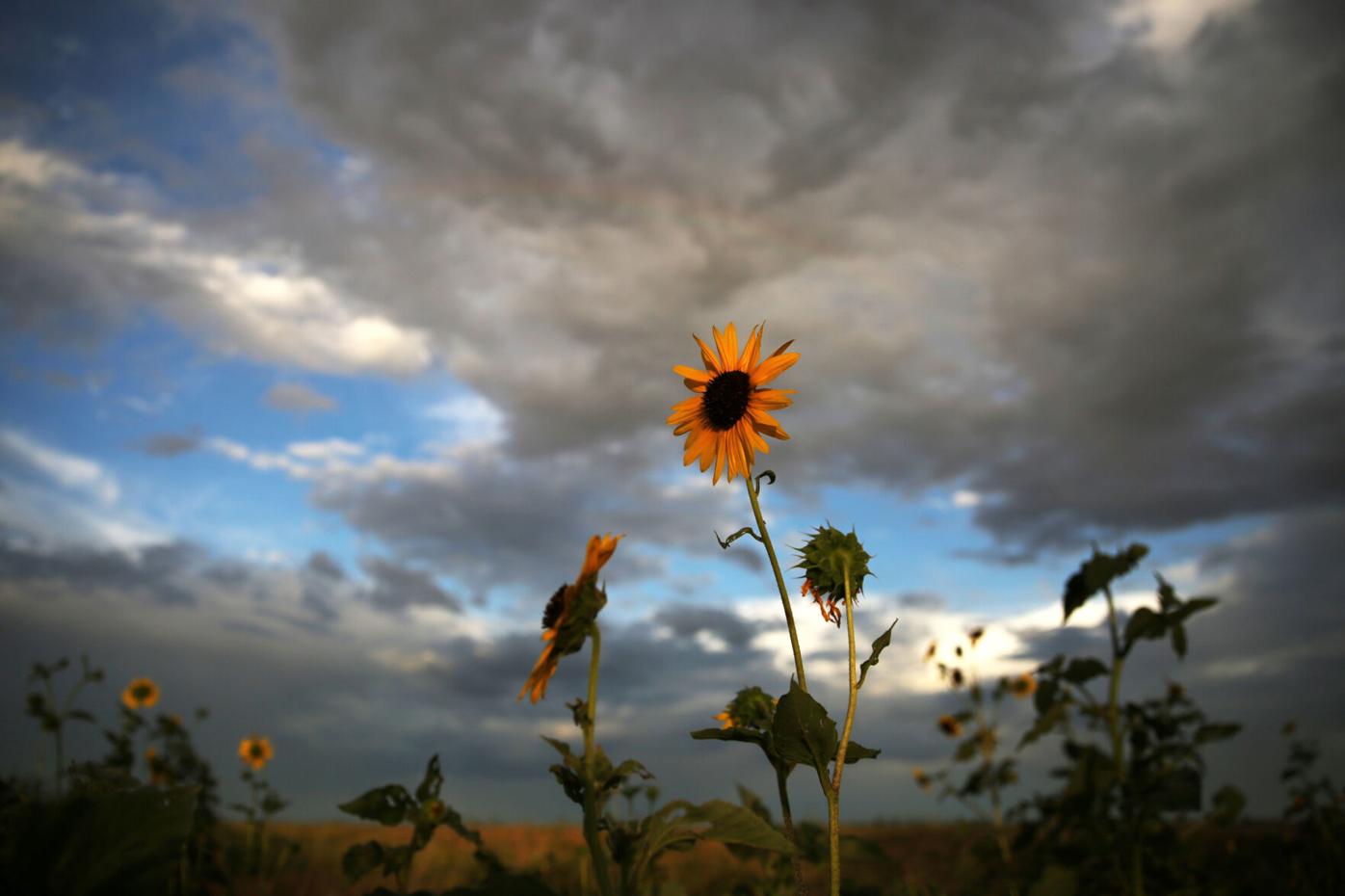
A sunflower catches the soft evening light after a rainstorm moved through Yoder in late July 2020. This rainstorm was one of the last in the area for the season, and it brought spotty rain to the area, leaving Gary Paul's ranch untouched and just as parched as it was before. (Forrest Czarnecki/The Gazette)
Forrest Czarnecki

A sunflower catches the soft evening light after a rainstorm moved through Yoder in late July 2020. This rainstorm was one of the last in the area for the season, and it brought spotty rain to the area, leaving Gary Paul’s ranch untouched and just as parched as it was before. (Forrest Czarnecki/The Gazette)
Sydney Paul grew up on the ranch and was highly involved with her father’s cattle herd as a youngster. Some of her fondest memories are slow dancing to George Strait with her father after feeding cattle out in the pasture or working with her 4-H show goats.
When it comes to taking over the ranch, though, she has confronted the reality that her family’s ranching legacy will come to an end with her.
She and Gary have agreed upon an understanding about the ranch’s future.
“It’s harder and harder to be a full-time, small-time rancher because of the drought (and) the economic realities,” Sydney said.
Beyond the hardships of ranching, Sydney fits into the growing sector of children and young adults born and raised on farms and ranches who want to find their own opportunities and forge their own path.
“I went off, and I got a degree and I want to use that degree,” Sydney said.
There is some guilt associated with being the person who ends five generations of tradition, Sydney admits, but from the beginning, her father has never pressured her into taking over.
For now, Paul just wants his daughter to inherit the land and the ranch house, and whatever she decides to do with it will be entirely her choice.
“This place, my daughter will inherit. And what her (and) her kids decide to do with it, I guess it’ll be their problem,” Paul says, adding, half-jokingly, “As long as I don’t lose it, (or) do something more stupid than I’ve done so far.”
Over the last two decades, Paul has been part of the statistic of declining acreage and ownership. At his largest, Paul owned about 2,500 acres and leased about 40,000. Now, he leases about 1,500 acres and what he owns has also sharply declined.
The drought is potentially speeding up this decline across the state.
Beyond potential economic fallout from losing small agricultural operations, there are environmental impacts state agriculture commissioner Greenberg is worried about.
“If we don’t have family farmers and ranchers, who is stewarding our landscape?” she asks.
• • •
The mass of calves, a cream and rust-colored tornado, swirls around the sale ring, spinning and bouncing from corner to corner, dodging the bid-caller in the middle of the floor. He’s wearing a sweat-stained cowboy hat and waving a sorting stick from one side of the small arena to the other.
With each slash of the sorting stick the price jumps and the auctioneer’s call quickens.

Gary Paul's calves run around the sale ring at an auction at the La Junta Livestock Commission sale barn in early February 2021. “They did real well. Very well,” Paul said shortly after all his calves were sold. (Forrest Czarnecki/The Gazette)
Forrest Czarnecki

Gary Paul’s calves run around the sale ring at an auction at the La Junta Livestock Commission sale barn in early February 2021. “They did real well. Very well,” Paul said shortly after all his calves were sold. (Forrest Czarnecki/The Gazette)
In the small sale barn where the flick of a wrist means a new per-pound value, the climbing prices keep pace with the calves running around.
At last, the sale is called and the small herd of young cattle is ushered out of the building.
“They did real well. Very well,” Paul says as the last of his calves leave the sale ring.
His shoulders sit a little lower than they were a few minutes ago. He has a soft smile on his face.
Paul turns and his eyes scan the bleachers behind him.
He finds the buyer and flashes a thumbs-up while mouthing the words ‘thank you.’ Now there’s only a few minutes of waiting while the front office prints a check and confirms the sale.
It’s the first week of February, and Paul’s feeling satisfied as he walks out of the very same sale barn where he started his cattleman career over six decades ago.
On the way home in the truck, he’s talking about his year when his phone chimes with a notification.
“I’ve got an appointment Friday to show it. Now Saturday, he’s got people flying in from South Carolina that want to come take a look at it,” Paul says while reading his texts at a stop sign. He’s referring to the house and land that’s just a short jog down the county road from his home.
It’s where he spent countless hours growing up as a “good old country boy.” Now he’s facing the unsettling prospect of selling it. Despite the sentimental value tied up in the land, it’s hard to deny the reprieve the check would bring.
By selling off the last of his calves for the year, Paul is hoping this was his final trip to the sale barn until the fall, or even the spring of 2022.
Recent snowfall not withstanding, February is turning out to be another dry month. There are only two options for Paul as he ponders the future, hang tough or hang it up.
The old-school rancher whose eyes often squint with a smile and a witty comment will be praying for moisture, and trying to maintain a positive attitude.
To him, the ultimatum brought on by one of Colorado’s worst droughts on record is pretty clear. So is his answer.
“I’m not finished with the cattle business,” Paul says, with a tone of defiant optimism. “I plan on having cattle the day I die, to be honest. So I don’t want it to be over.
“What else am I going to do?” he says, turning onto the county road that leads to his ranch where there are still 50-odd cattle milling about in the corrals behind his barn.
“It’s a good way of life. It’s a very hard way of life, but it’s something to be proud of, and I enjoy it.”
Coming Friday: Scientists seek to prepare Colorado for ‘chaotic weather’ future.





